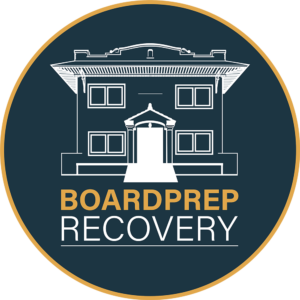For the estimated 22 million people in the United States in recovery from substance-use disorders[1], recovery group meetings have been part of a daily protocol to help them stay “clean and sober” one day at a time. But once the COVID-19 pandemic kicked into high gear, the vast majority of in-person meetings closed down and were replaced by Zoom meetings (or some online streaming equivalent).
Indeed, countless recovery support meetings moved from church basements, treatment centers and recovery “clubhouses” to internet-based virtual meetings, given the concern that—due to the CDC’s original guidelines of adhering strictly to “social distancing” protocols—so many recovering from substance use disorders would be left without one of their essential resources, especially as they began navigating life amid greater amounts of stress, anxiety and isolation.
It should be noted huge numbers of those in recovery were also at an increased risk of developing a severe, even life-threatening case of COVID-19, given their addiction-related pre-existing conditions and compromised immune systems.
The fact is, even with the tremendous rise in popularity of Zoom recovery meetings and the access of such to people having recently completed treatment or those who are new to recovery, there have been “pros and cons” associated with the shift away from in-person meetings.
According to a Washington Post article, for some, the virtual meetings are a lifeline that have helped them maintain their sobriety during a time when mental health issues, alcohol consumption and overdoses are on the rise. Others, however, say virtual platforms have not been able to fully replicate the close connections formed during in-person meetings.[2]
Gerry Schmidt, currently chief operations officer at Valley HealthCare System in West Virginia and formerly president of NAADAC, the Association for Addiction Professionals, says, “It’s a good alternative, but it’s not a perfect alternative, and it doesn’t fit for everyone.”[3]
While literally thousands of virtual support group meetings emerged seemingly overnight to provide alternative for those seeking the lifeline recovery meetings provide, this shift also reflects a similar shift to telehealth services among addiction treatment service providers who help those struggling with substance-use disorders.
According to Deni Carise, chief science officer of Recovery Centers of America. “The change, which has been widely adopted by many mental health professionals, has given experts hope of reaching the roughly 90 percent of people who are not getting treatment even though they may meet the diagnostic criteria for substance-use disorder. This is our opportunity, not just to make getting treatment easier for people, more frequent for people, more confidential, but also a time when we can reach (more of) that 90 percent of people.”[4]
Now, even though one effect of the pandemic has been the rise of telehealth services and—given the general success of such—the increased likelihood these services will remain part of the ongoing landscape of post-pandemic addiction care, the in-person recovery meetings will very likely be re-established after the COVID dust settles.
Carise points out, “A vast majority of community support groups will resume in-person meetings once it’s safe. They will do that because that’s what we know has worked for so long.”[5]
Treatment centers nationwide, as well as 12 Steps fellowships, recognize one of the most valuable dimensions of recovery is establishing connections and lasting bonds with people going through similar experiences, which in-person support group meetings often create.
Amy Durham, corporate director of alumni relations at Pennsylvania-based Caron Treatment Centers and a recovering addict herself with longtime sobriety, said, “We don’t recover alone. We have to have each other. This disease loves isolation, and we know all about loneliness and despair, and we can’t stay well in recovery if we’re not connecting with people.”[6]
Certainly, when the pandemic was in full swing, re-creating these invaluable connections and meaningful interpersonal exchanges on a virtual platform was important, hence the advent of Zoom meetings and the like.
However, according to Schmidt, challenges immediately arose and ended up demonstrating mixed results. “It’s like watching a movie,” he said. “It’s just one-dimensional. You don’t get to use all of your senses. . . . In the whole business of recovery, a lot of it is personal.”[7]
That personal touch apparently has been missed by many, often enough with a deleterious downside. Alison Johnson, managing director at Summit Psychological Services in New Jersey, who specializes in counseling people with addictions, said, “There are people who have stopped going to meetings. People who would probably have gone regularly to meetings several times a week, but a lot of them have just dropped off doing those meetings and not replaced them with something else.”[8]
As statistics have indicated, there has been a pandemic-related rise in overdoses among those with substance use disorders.[9]
Still, Durham said, while online meetings are “not ideal, I am beyond grateful for the opportunity to do them. I’m so grateful to have the technology to be able to do this, because I’m not sure where a lot of us would be had we not had this platform.”[10]
[1] 2019 National Survey of Drug Use and Health (NSDUH) Releases | CBHSQ Data (samhsa.gov)
[2] Addiction support groups: When covid forces recovery online – The Washington Post
[3] Ibid.
[4] Ibid.
[5] Ibid.
[6] Ibid.
[7] Ibid.
[8] Ibid.
[10] Ibid.







